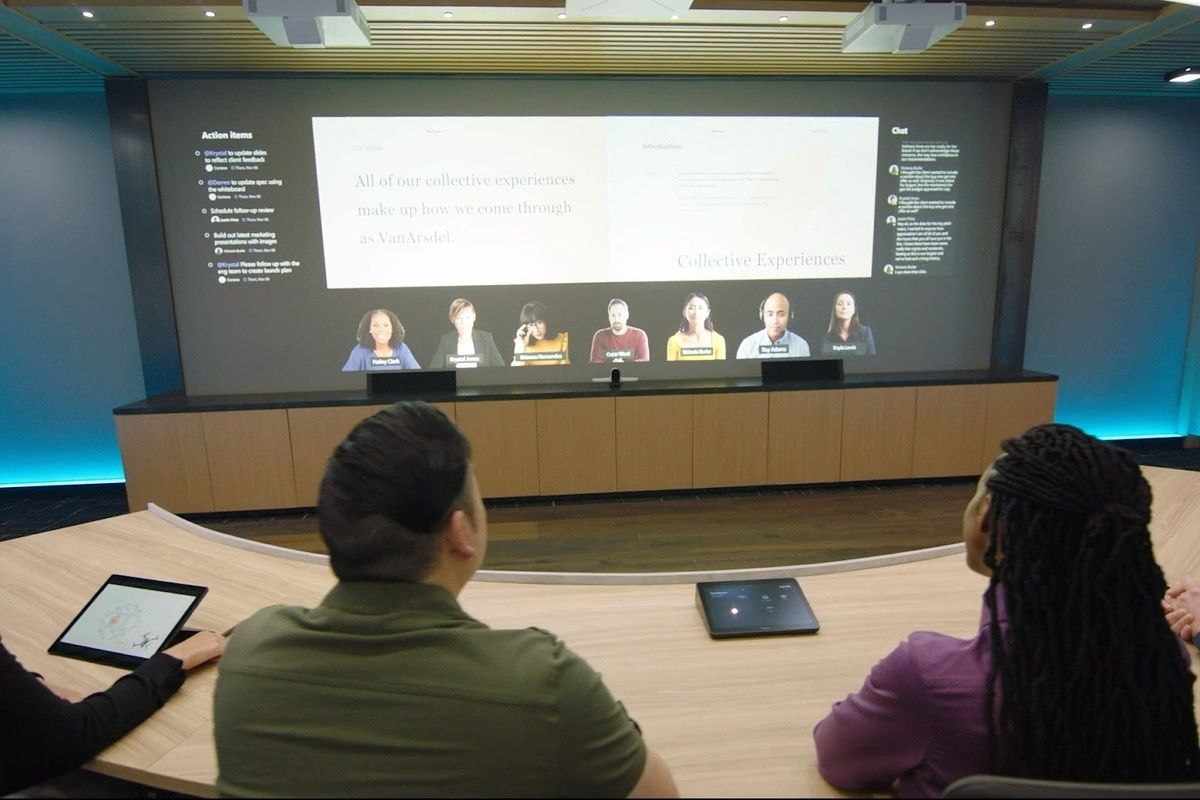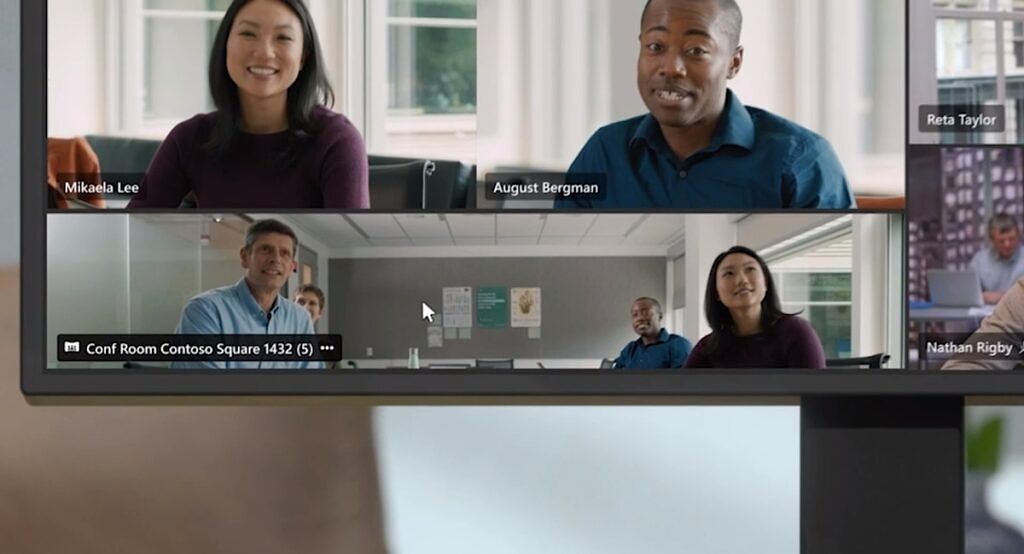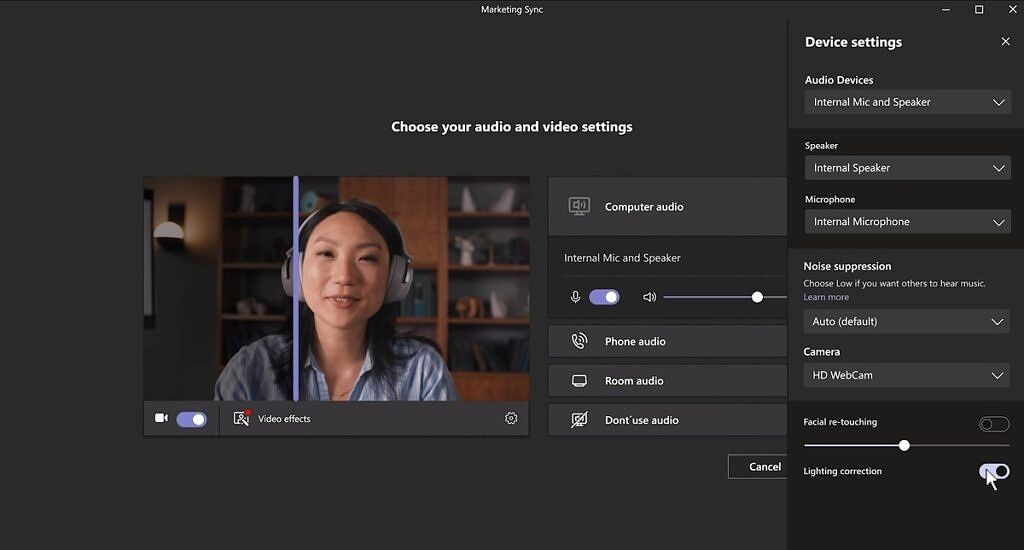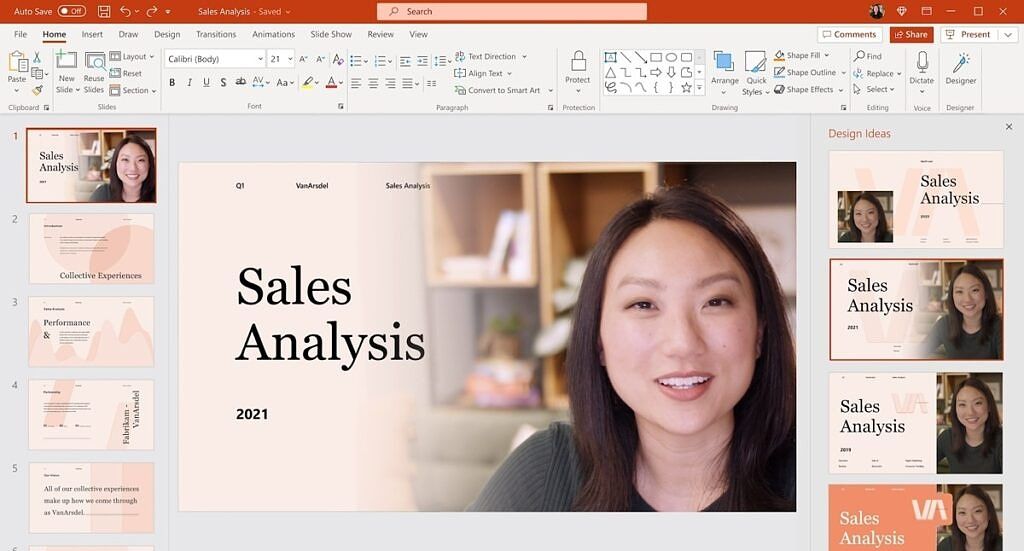Microsoft has announced an array of new devices and features for Teams with the goal of making hybrid work easier. If you've been following Microsoft recently, you know hybrid work has been a major focus since the COVID-19 pandemic began. The company had already announced a bunch of Teams features for hybrid work, but it's not done yet.
First off, you may recall that Microsoft announced a feature called "front row" back in June. This is a new layout for Teams meetings in Teams Rooms devices, where virtual meeting participants are shown in a row at the bottom of the screen to keep them at eye level for those attending in person. Today, Microsoft announced new intelligent cameras for hybrid meetings like this. Using AI, these cameras can detect who's speaking in a meeting room and zoom in on them, capture multiple video streams so each in-person attendee gets their own video feed in a Teams meeting, and facial recognition to identify meeting participants so they can be labeled in their respective video pane.
The companion mode in the Teams mobile app is also getting an upgrade. For in-person attendees, it will be possible to easily see the Teams meeting chat, live reactions, and access to Whiteboard. It's also getting easier to join meetings or share a PowerPoint presentation from the mobile app. This should open up new possibilities for collaboration between remote and in-person participants.
For remote meeting participants, Microsoft is also adding a new feature called lighting corrections in the coming months. As the name suggests, this allows Teams to make up for uneven or poor lighting during a meeting so other participants can see you clearly. And if you're trying to get in touch with someone while you're on the road, Teams is getting support for Apple CarPlay this month, too.
For workers in the office, there's also a new hot desking experience for Teams displays. Users can book a space in the office to sign in with Teams, and get access to all their personal Teams data. Once they stop using the space, they're logged out and all their data is removed. This will debut in the Lenovo ThinkSmart display by the end of the year.
Microsoft is also introducing new hybrid work features that leverage the connection between Teams and PowerPoint. First off, there's a new feature called Cameo, which integrates your Teams video feed directly into a PowerPoint presentation, letting you choose where your feed appears relative to the slideshow. Microsoft is also bringing PowerPoint's Presenter coach feature to Teams, and renaming it to Speaker coach. If you don't already know, Speaker coach is a feature that gives users feedback on how they're presenting. It listens for things like long breaks, monotone speech, "um" sounds, and more, and it also checks if you're keeping eye contact with the camera. Both of these features will be available in early 2022.
Rounding out the new Teams features, Microsoft also announced a few apps that now support the new shared stage announced at Build 2021. That means these apps can share content to a meeting as if it was a normal video feed or a screen share. A few supported apps available today include Miro, MURAL, Lucidspark, and Freehand, but more are on the way.
One last Teams-related announcement is the Logi dock, a new dock from Logitech which includes a speakerphone with touch controls. You can use it to take Teams calls and you get quick controls or adjusting volume levels, muting your microphone, or turning off your camera. It also has plenty of ports, including two USB Type-C, two USB Type-A, HDMI, and DisplayPort. It also has Bluetooth so you can connect your phone to stream audio from it. This will launch this winter and cost $399.99.
Finally, one last new piece of news is for Outlook, which is getting new working hours and RSVP experiences for hybrid work. You'll be able to specify not only what times you're working, but when you'll be working remotely or in the office. Similarly, when responding to a meeting request, you can also choose to participate remotely or in person, so organizers can more easily book rooms that can accommodate everyone.




